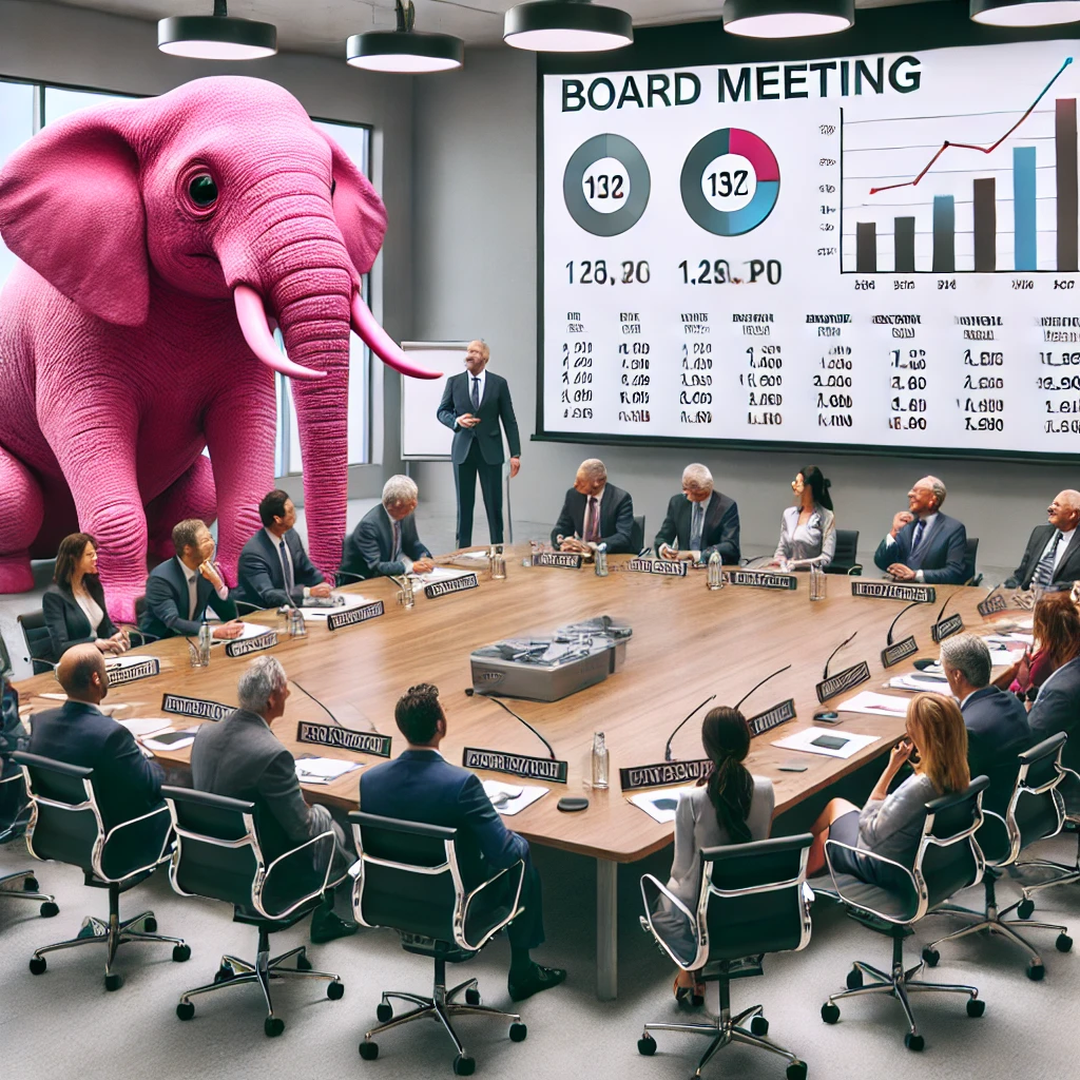A Neurodivergent Leader's Field Guide to the Boardroom
By Stacy Chamberlain
Stacy Chamberlain is a writer, speaker, and consultant specializing in neurodivergent leadership, burnout recovery, and the future of work. As the founder of Flower Street Strategies, she helps organizations and individuals embrace innovative, human-centered approaches to leadership and success.
Whether in a Fortune 500 boardroom or a fast-moving startup meeting, you're not alone if you’ve ever felt like the only one seeing the obvious. Whether it was a corporate boardroom, a union hall, or a nonprofit strategy session, I’ve sat in enough meetings to know this: the air is thick with quiet calculations. The nameplates, the hot mics, the silent assessments—every move is measured. Meanwhile, my brain fires off ideas like a tennis ball machine stuck on max speed. Thirty-seven people were seated around it, with twice as many watching from the audience. A camera and mic recorded everything for those tuning in remotely.
"We should address this now," I'd say, while everyone else was content to move on to the next agenda item.
This urgency wasn’t impatience. My brain has a built-in doomsday clock, always ticking down to potential missed opportunities. Many neurodivergent individuals experience time differently, a phenomenon known as time blindness. It’s not that we don’t understand later—it’s that our brains scream NOW! at a volume that’s impossible to ignore.
The Pink Elephant in the Room: Why Only Neurodivergent Leaders See It
While others focused on quarterly reports and numbers, I stared at the pink elephant in the room—the one no one else seemed to acknowledge. It wasn’t just a metaphor. Neurodivergent leaders often see what others ignore: the ethical dilemmas, the long-term consequences, and the inefficiencies screaming for solutions. I felt like I was the only person who could see the butterfly effect in real-time.
“But have we considered the long-term impact on…?” I’d start, scanning the room for a flicker of recognition. Nothing. It was like pointing at a glaringly obvious pink elephant while everyone else carried on, oblivious.
This isn’t just a quirk or overthinking. Neurodivergent leaders are often wired to spot hidden truths, ethical blind spots, and inefficiencies before they snowball into crises. Research suggests many neurodivergent individuals—particularly those on the autism spectrum—have an amplified sense of justice and fairness. We’re not trying to be the office Jiminy Cricket. Our brains simply won’t let us ignore these considerations.
Efficiency: The Neurodivergent
If seeing inefficiency causes you physical pain, congratulations! You might be neurodivergent. Where others saw time-honored traditions, I saw convoluted processes screaming for a more straightforward solution.
"Couldn't we just...?" became my boardroom battle cry, usually followed by suggestions that made perfect sense in my head but translated to ancient Sumerian for everyone else.
This drive for efficiency isn't just perfectionism gone wild. Our brains are wired to spot patterns and inconsistencies, often leading to innovative solutions. Some companies have found that neurodivergent teams can be up to 30% more productive than neurotypical teams regarding specific tasks.
Decoding the Boardroom: How to Bridge the Communication Gap
For those trying to decode your neurodivergent colleagues, here's a quick translation guide:
1. "This is urgent" = "I can see the future, and it's on fire if we don't act now."
2. "Have we considered the ethical implications?" = "My moral compass is screaming so loudly I can barely hear myself think."
3. "I have an idea to make this more efficient" = "The current process is causing me physical discomfort, and I need to fix it for my sanity."
4. "I don't understand" = "I literally don't understand. Please explain. No, really."
And for my fellow neurodivergent leaders, we can better understand these spaces more strategically when we understand how our brains are wired and how others are. So here are a few pointers I learned the hard way:
1. When they say "read the room," they mean "sense the unspoken emotional undercurrents." I know, I know. You could ask us to breathe underwater. Typically, when we bring it up, the undercurrents tell us it was nothing. May the force be with you.
2. Only some problems need to be solved immediately. I'm still struggling with this one.
3. Discernment. When developing a strategy for the boardroom, sometimes the diplomatic approach is more effective than the direct one. Think of it as a long-term efficiency strategy.
4. Find your allies. Look for the people who light up when you speak, not the ones who look like they're sucking on a lemon and seem not to want to be on the same page. Those folks aren't for you.
Why Neurodivergent Leaders Are Reshaping the Future of Leadership
Here's the kicker: boardrooms need our kind of trouble. They need people who see problems before they become crises, push for efficiency, and never stop asking "why" and "what if."
Neurodivergent individuals bring unique strengths, particularly when placed in roles that align with their cognitive abilities. Deloitte found that organizations with neurodivergent teams saw a 30% boost in productivity and innovation, making them indispensable in leadership and decision-making. According to JPMorgan Chase's Autism at Work program, neurodivergent employees can be up to 90% to 140% more productive than their neurotypical peers. This translates to nearly 2.5 times the productivity in specific roles, such as tasks requiring hyperfocus, attention to detail, and pattern recognition.
Our different ways of thinking aren't just valuable— they're becoming essential in a world that's changing faster than ever.


